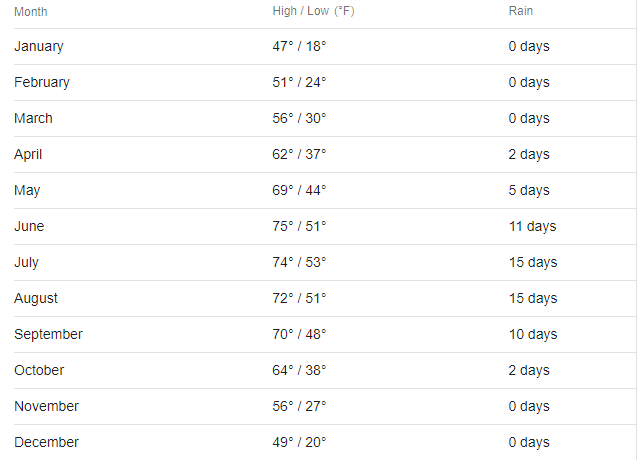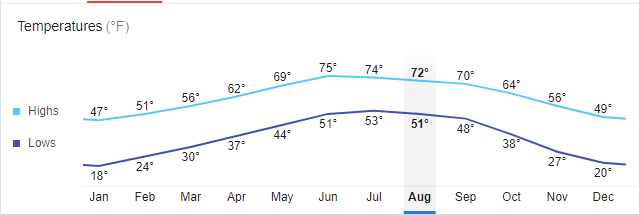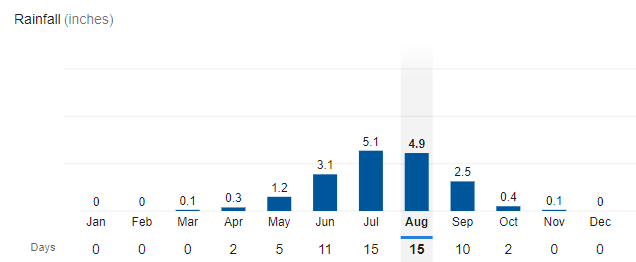
Lhasa Climate
With its azure sky, sparkling rivers, mystery, religion, architecture, simple and unsophisticated Tibetan people, Lhasa is definitely a dream place for many tourists. Lhasa is one of the highest cities in the world, with an average of more than 3,000 hours of sunshine every year. Climate in Lhasa is generally divided into dry season and rainy season, with the precipitation mainly concentrated from June to September. The air here is thin, the overall temperature is relatively low, and the temperature difference between day and night may be large.
Lhasa Weather Graphs and Climate Features
Due to its unique geographic location and topography, Lhasa enjoys plateau temperate semi-arid climate. It features strong radiation, long hours of sunshine, great temperature difference during a day. It's dry, cold and windy in winter and spring, and warm & humid in summer and autumn.

Temperature

Lhasa is located in the north of the Himalayas. Affected by the downdraft, Lhasa is a temperate plateau semi-arid monsoon climate with the characteristics of fair weather, rare rainfall, no severe cold in winter and no intense heat in summer. The highest temperature in history is 29.6°C, the lowest temperature is minus 16.5°C, and the annual average temperature is 7.4°C. In the afternoon in June, the temperature can reach 27-29°C (81-84°F). You can just wear shorts in the daytime, but at night the temperature can drop to 0-5°C (32-41°F).
Precipitation

Winter and spring, this is what people call the dry or windy season, is from late October to May in the region. During this time, there is usually less rain and more wind, and snow mainly occurs in mountainous areas. Thanks to the abundant sunlight and intense radiation, no matter how cold it is at night, it still feels warm during the daytime. During the rainy season from June to early October, the weather becomes warm and humid. The annual precipitation in Lhasa is 200-510 mm, mainly night rainfall, and the frost-free period ranges from 100 to 120 days.
Sunshine Hours

The average annual sunshine hours of Lhasa are more than 3,000 hours, 1,800 hours more than Chengdu of sichuan province, and 1,100 hours more than Shanghai. Lhasa has the best sunshine hours among all Chinese cities, so it has the reputation of "Sunlight City". Lhasa is featuring strong solar radiation all the year round, thin air, low temperature, large diurnal temperature difference, cold, dry and windy in winter and spring.
Note: The graphs are for reference only.
Lhasa Weather and Climate by Month
Four Seasons of Lhasa & What to Pack
Spring(March-May)
- Weather Feature: Lhasa is characterized by windy weather. In general, this period of time can also be called windy season. There is very little precipitation in Lhasa in spring.
- What to Bring: Spring in Tibet is usually windy, so don't wear too little. In spring, Tibet is not as warm as mainland China, especially the south China. It is suggested to wear sweaters and coats on the top, and long Johns and trousers on the lower body. (If you want to go to Mount Everest, Namtso, Ali, etc., you are recommended to wear down jacket).
- Recommended Tour Activities: Spring is the sunniest season of the year in Lhasa. You can enjoy the sunshine in Jokhang Temple square, Potala Palace square, rooftop of your hotel, or soak in Yangbajing hot spring. A trip from Lhasa to Nyingchi to enjoy the sight of cherry blossom is also a choice for many travelers.
Summer(June-August)
- Weather Feature: The summer in Lhasa is warm and humid, and is the best season for travelling. Compared with spring, summer in Lhasa is characterized by raining quite a lot, most of which falls at night.
- What to Bring: On the one hand, you need to prevent sunburn; On the other hand, you should prepare for rainfall. When the sun comes out, if you wear less, you will get tanned and sunburned; On rainy days, when the sun disappears, if you wear less, you will feel cold. It is recommended to wear anorak (rain proof), sport pants, and trousers. But if you go to Mount Everest and Namtso, the accommodation condition is relatively humble. Because the temperature is very low in the morning and evening, people who are afraid of catching a cold are advised to bring thick sweaters.
- Recommended Tour Activities: It is suitable for travelers to go to Lhasa to spend the summer. At this time, Namtso lake has been released from ice, and the lake is extremely beautiful.
Autumn(September-October)
- Weather Feature: Rainy season in Lhasa is coming to an end(July and August are famous rainy seasons in Tibet, and in late August and early September, the rainy season gradually passes away). The clear and refreshing autumn weather is neither cold nor hot.
- What to Bring: You can wear clothes like summer. The climate and weather are more comfortable than summer. Be sure to bring long Johns, or knitted pants, with you.
- Recommended Tour Activities: July 1st in Tibetan calendar (the end of August in Gregorian calendar) is the Shoton festival of Tibetan calendar in Lhasa. At that time, people can not only enjoy Tibetan opera performances, but also have the opportunity to visit the Buddha paintings displayed by Drepung monastery and see the magnificent scene. Travel in this time, you may also take part in the Bathing Festival and Ongkor Festival.
Winter(November-Next February)
- Weather Feature: The temperature difference between day and night in Lhasa is large in winter. Although it is warm under the strong sunlight of daytime, the temperature is very low at night.
- What to Bring: You need to put on down jacket this season. The sun is stronger by day, you are supposed to bring sunscreen products. And pay attention to keep warm in the evening.
- Recommended Tour Activities: The lively atmosphere of the Tibetan New Year is the biggest attraction for travelers. Besides enjoying the hot springs and overlooking the snowy mountains, people have the opportunity to see the beauty of enveloping snow.
Best Time to Visit Lhasa
Generally, tourists can visit Lhasa all the year round. But the best time to visit Lhasa is from April to October and the peak season is from May to September. During that period, the climate in Lhasa is warm and humid.
If you want to visit Lhasa during summer and fall, you can visit Potala Palace, Jokhang Temple as well as Drepung Monastery in the daytime and explore the strong and mysterious Tibetan culture. In the event that you arrive at Lhasa just during the Shoton Festival, you can enjoy the discount off the normal admission price in Lhasa. Moreover, it is also the best time to experience the plateau thermal spring and climb the snow mountain.
Keep Reading













